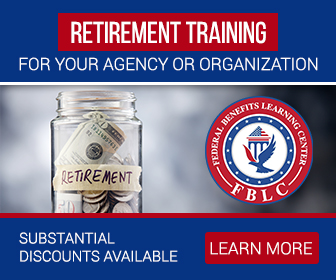Key Takeaways
- Understand the timing and tax considerations for accessing your TSP funds to help preserve your retirement savings.
- Learn strategies for withdrawing funds from your TSP to avoid costly mistakes and maximize your retirement income.
Welcome to TSP Access: Keeping More of Your Hard-Earned Savings
If you’re a federal employee gearing up for retirement, your Thrift Savings Plan (TSP)
- Also Read: New Rules for Federal Employees in 2025: What You Need to Know to Stay Ahead
- Also Read: Seven TSP Fund Allocation Strategies Federal Employees Are Using to Strengthen Their Retirement Portfolios
- Also Read: Military Buyback for Federal Employees: Is It Really Worth It? Here’s What You Need to Weigh Up
When Can You Start Accessing Your TSP?
Federal employees are eligible to access their TSP at age 59½ without any early withdrawal penalties. This is a common time to start, but for those retiring earlier, the rules can be tricky. Let’s break down a few key timelines to keep in mind:
-
Age 55 Rule: If you retire during or after the year you turn 55 (or 50 for certain special roles like law enforcement), you can access your TSP without the 10% early withdrawal penalty. This can be beneficial if you’re considering an earlier retirement, but only applies if you leave federal service before making withdrawals.
-
Traditional vs. Roth TSP Timing: When accessing your TSP, remember that withdrawals from a Traditional TSP account are taxed as regular income, while Roth TSP distributions are tax-free after you turn 59½, provided your account is at least five years old. Planning the timing of your withdrawals from each can make a big difference.
Withdrawing Wisely: Avoiding Common Pitfalls
Navigating TSP withdrawals can seem complex, but a few strategies can help make the most of your savings and minimize taxes. Here are some key tips:
1. Take Only What You Need
It might be tempting to take a large lump sum upon retirement, but doing so could push you into a higher tax bracket and cost you more in taxes. Instead, consider taking withdrawals only as you need them. This helps spread out the taxable income over multiple years and keeps more money in your TSP to continue growing.
2. Explore Monthly Payments
TSP allows you to set up monthly payments, either based on a fixed dollar amount or the IRS’s life expectancy tables. Monthly payments offer a stable income source while avoiding large withdrawals that may trigger higher taxes. These payments are easy to adjust and can be changed once a year, giving you flexibility as your retirement needs evolve.
3. Be Mindful of Required Minimum Distributions (RMDs)
Once you hit age 73, you’re required to take annual RMDs from your TSP (unless you’re still employed by the federal government). Failing to take an RMD can lead to hefty penalties. Consider how RMDs fit into your income needs, especially if you have other retirement accounts.
Understanding the Tax Landscape
Taxes are a key factor in managing your TSP. Withdrawals from a Traditional TSP are taxed as ordinary income, which could affect how much you owe each year. Here’s how to navigate the tax landscape:
1. Plan for Taxable Events
Taking large lump-sum distributions can spike your tax liability, sometimes pushing you into a higher bracket. By drawing funds gradually, you can spread out taxable income and keep more of your retirement savings.
2. Consider Partial Roth Conversions
If you have both Traditional and Roth TSP accounts, a well-timed Roth conversion might be beneficial. This involves moving money from your Traditional TSP to a Roth account, which can offer tax-free withdrawals in the future. This strategy can be particularly useful in years when your taxable income is lower, potentially lowering the overall tax hit on your retirement funds.
Weighing Your Withdrawal Options
Your TSP offers different withdrawal options—each with pros and cons depending on your situation. Here’s a quick look at each option:
1. Lump-Sum Withdrawals
Taking a single, large lump sum offers the advantage of immediate access but has major tax implications. Consider lump-sum withdrawals only for specific needs, as this could quickly reduce your TSP balance.
2. Installment Payments
You can receive payments at regular intervals—either monthly, quarterly, or annually. These payments are based on a specified amount or life expectancy, and they allow for more predictable income. With installment payments, you can access your funds over a longer period, helping you keep more money invested and growing.
3. Annuities
Another option is purchasing an annuity, which converts your TSP balance into a guaranteed income stream. While annuities can be beneficial for predictable income, they generally come with less flexibility than other options. Review annuity terms carefully, as they can lock in your funds permanently.
Strategies to Keep More Money in Your Pocket
The goal in retirement is to maximize your income while minimizing unnecessary fees and taxes. These strategies can help you stay ahead:
1. Delay RMDs When Possible
If you’re still working beyond age 73, you’re not required to take RMDs from your TSP. This is called the “still working” exception, and it allows your TSP to keep growing until you actually need to start taking those mandatory distributions.
2. Take Advantage of Life Expectancy Calculations
Choosing to receive payments based on life expectancy can make your funds last longer, as payments are calculated based on average life expectancy rather than a set dollar amount. This can be a great way to create a steady income stream that fits your budget.
3. Consider a Roth TSP for Future Tax-Free Income
If you have a Roth TSP, withdrawals made after age 59½ are tax-free as long as the account has been open for at least five years. Balancing Traditional and Roth accounts can help you manage your tax liability across retirement.
Mapping Out Your TSP Strategy for Long-Term Success
Your TSP represents years of diligent saving, and with a careful approach, you can make it last. Avoiding large lump-sum withdrawals, utilizing monthly payments, and being strategic about taxes are all steps toward maximizing your retirement savings. By understanding the timing, taxes, and distribution options that come with your TSP, you’ll be better positioned to enjoy a secure and rewarding retirement.
Maximize Your TSP in Retirement
The right TSP strategy can mean the difference between a comfortable retirement and financial stress. By understanding your options and using a thoughtful approach to withdrawals, you’ll be in control of your retirement savings. It’s never too early to start planning your TSP withdrawals so that you can make the most of your savings without losing money to taxes and penalties.













